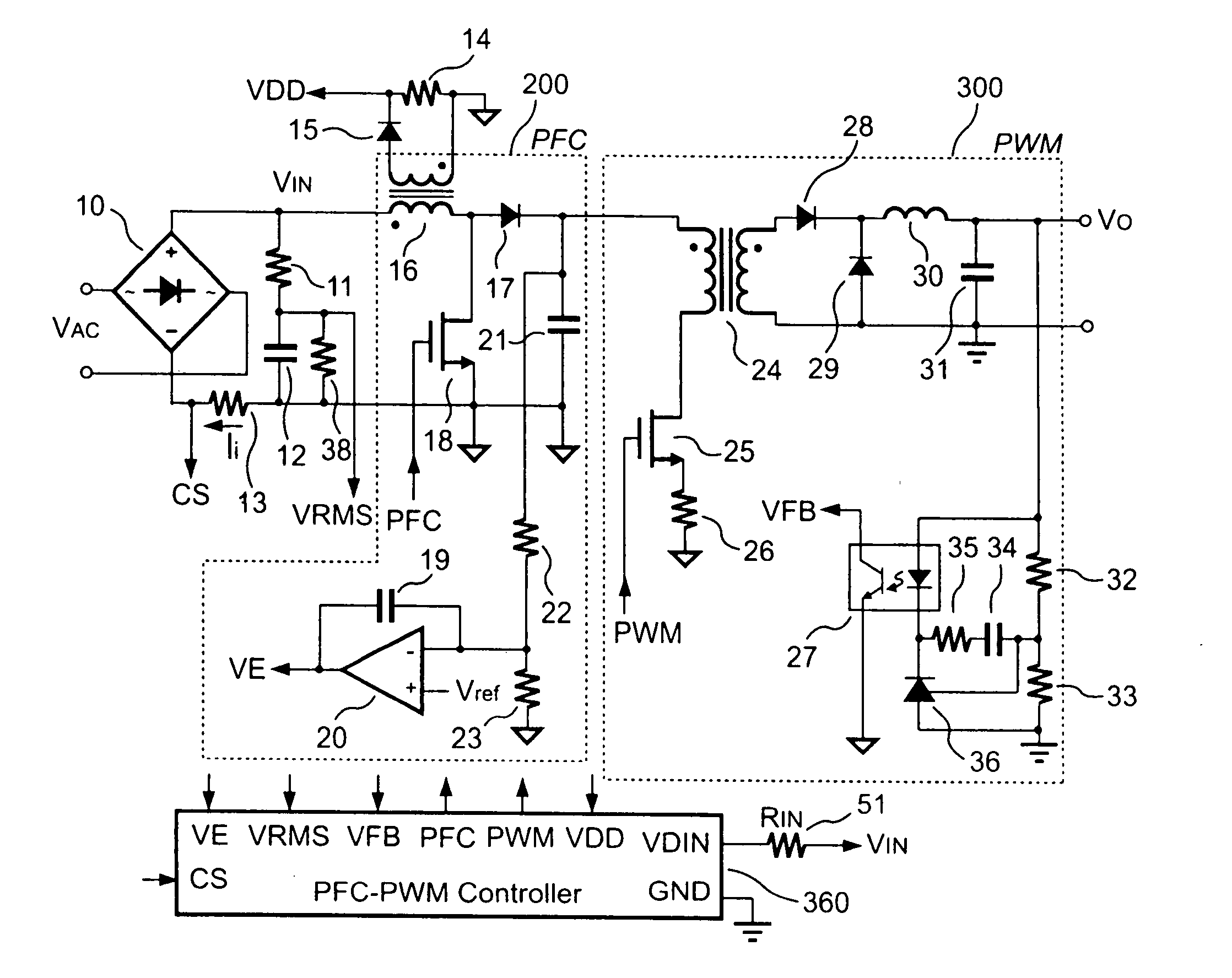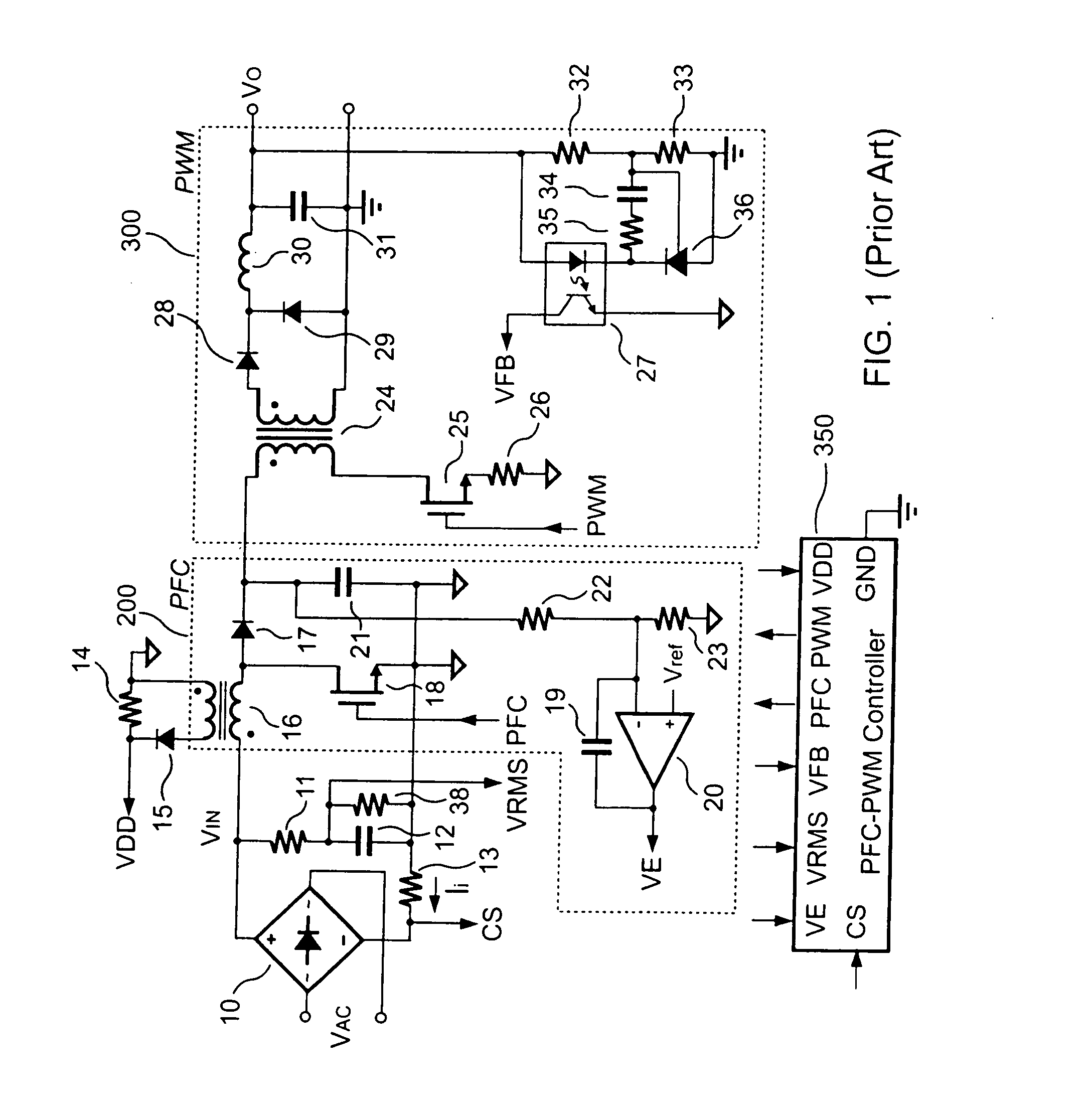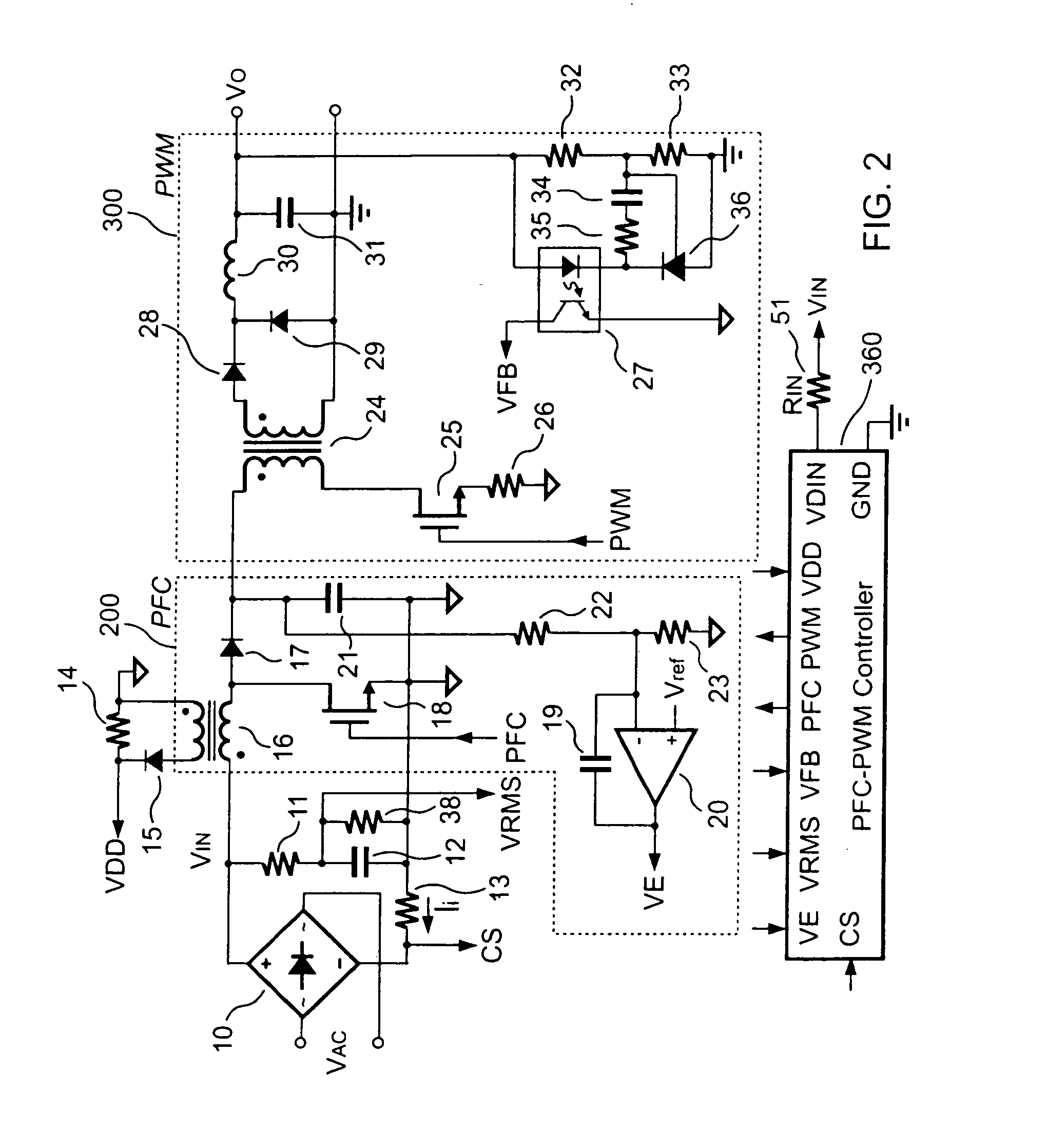Pfc-pwm controller having a power saving means
a controller and power saving technology, applied in the direction of electric variable regulation, process and machine control, instruments, etc., can solve the problems of serious power loss, reduce the power factor, and the traditional switching-mode power supply has some drawbacks, so as to reduce the number of pins, reduce the power factor, and reduce the cost
- Summary
- Abstract
- Description
- Claims
- Application Information
AI Technical Summary
Benefits of technology
Problems solved by technology
Method used
Image
Examples
Embodiment Construction
FIG. 1 shows a conventional forward power converter equipped with a PFC-PWM controller 350 to drive a PFC circuit 200 and a PWM circuit 300. A resistor 22 and a resistor 23 form a resistor divider to sense the output voltage of the PFC circuit 200 from a cathode of a rectifying diode 17. An operational amplifier 20 generates a PFC-feedback voltage VE that is varied in inverse proportion to the voltage at the junction of the resistors 22 and 23. The PWM circuit 300 can be viewed as the load of the PFC circuit 200. An increased load will cause the output voltage of the PWM circuit 300 to decrease, and with that the output voltages of the PFC circuit 200 and the PWM circuit 300 will also decrease accordingly. On the other hand, when the load decreases, the output voltages of the PFC circuit 200 and PWM circuit 300 will also increase. To obtain a sinusoidal line current waveform, the PFC-PWM controller 350 accepts several input signals. The input signals include the line current informa...
PUM
 Login to View More
Login to View More Abstract
Description
Claims
Application Information
 Login to View More
Login to View More - R&D
- Intellectual Property
- Life Sciences
- Materials
- Tech Scout
- Unparalleled Data Quality
- Higher Quality Content
- 60% Fewer Hallucinations
Browse by: Latest US Patents, China's latest patents, Technical Efficacy Thesaurus, Application Domain, Technology Topic, Popular Technical Reports.
© 2025 PatSnap. All rights reserved.Legal|Privacy policy|Modern Slavery Act Transparency Statement|Sitemap|About US| Contact US: help@patsnap.com



